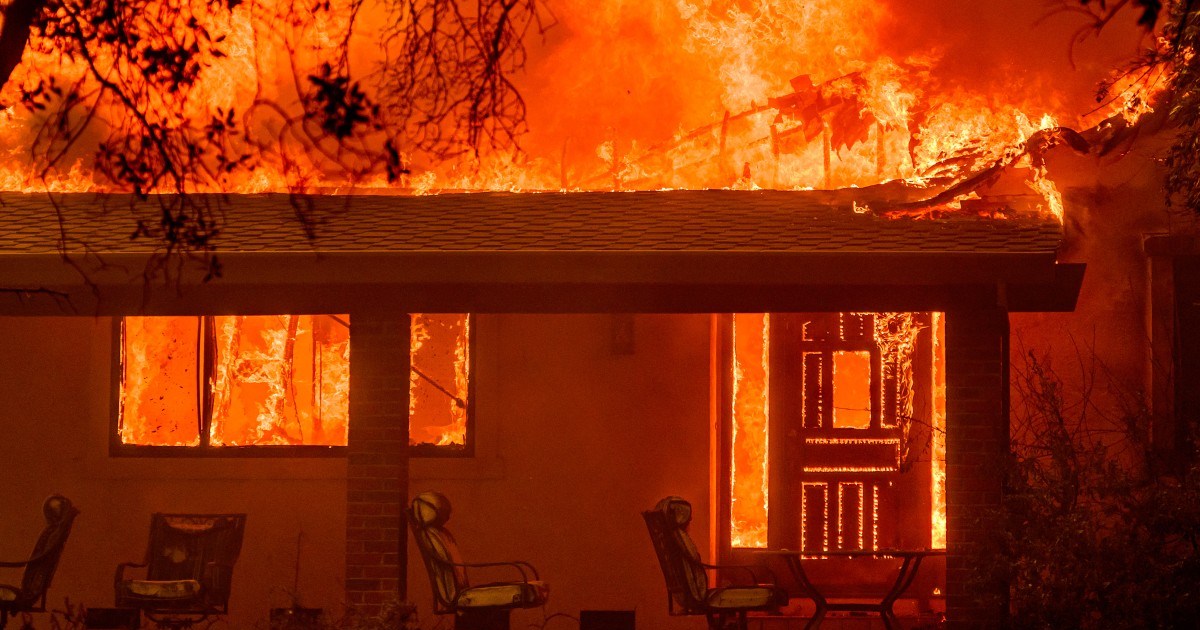
Firefighters lined roads to keep flames from reaching homes as helicopters dropped water on a growing wildfire in northern California that has forced at least 26,000 people to evacuate, as the state and a swath of the United States are in the grip of a “record-breaking and dangerous” heatwave.
The Thompson fire broke out on Tuesday about 110km (70 miles) north of Sacramento, near the city of Oroville. It sent up a huge plume of smoke that could be seen from space as it grew to more than 14 square kilometres (5.5 square miles).
More than 3,500 acres (1,400 hectares) of grass and woodland have since been consumed by the blaze.
Oroville is near Paradise, a community that was razed in 2018 by the deadliest fire in California’s history that killed 85 people.
Climate scientists say the western US is undergoing a decades-long aridification as weather patterns change, at least in part because of human-caused global warming.
California suffered about 20 years of drought, but the last two years were relatively mild, with near-record amounts of rain that filled reservoirs and caused furious growth in forests and grasslands.
However, 2024 is shaping up to be a hot and dry year, and flora is rapidly drying out, creating plenty of fuel for the wildfires that are a normal part of the ecosystem’s natural cycle.
The conditions have left officials warning of potentially devastating blazes waiting to happen, especially if people are careless or negligent with fireworks on the July 4 Independence Day holiday.
On Wednesday, some 1,400 firefighters were attacking the flames on the ground with heavy machinery and by air with planes and helicopters, dumping red fire suppressant.
California Governor Gavin Newsom declared a state of emergency in Butte County, a move intended to free up resources and help the battle against the blaze.
The National Weather Service (NWS) said the area was expected to see punishingly high temperatures over the coming days, with the mercury touching 46 degrees Celsius (115 degrees Fahrenheit) in some spots.
The oppressive heat is part of a system that is set to affect almost half of the country’s population, including over the July 4 holiday weekend.
Forecasters said the heat would roll in off the West Coast and take hold of central California before spreading further as the week progresses, including into Oregon and Washington states to the north.
“Dozens of record highs are possible, expressing the rarity of this early July heatwave,” the NWS said.
EMEA Tribune is not involved in this news article, it is taken from our partners and or from the News Agencies. Copyright and Credit go to the News Agencies, email news@emeatribune.com Follow our WhatsApp verified Channel




